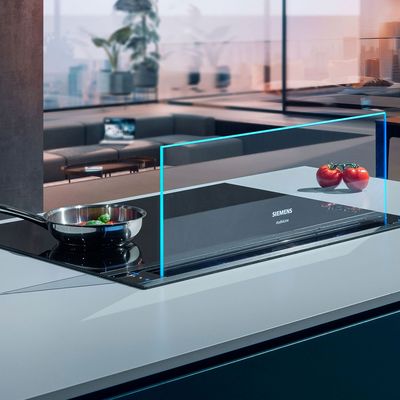Many modern kitchens have spacious, open-plan layouts that incorporate dining and living areas. They are great as flexible family spaces but they need powerful extraction to remove grease, steam and cooking odours. Read on to find out what you need to know when considering a new kitchen layout and buying an extractor.

How do extractors work?
There are two ways to extract grease and unwanted vapours from your kitchen: removing them via ducts to the outside or filtering them and recirculating the air. Most extractor models can be configured to either method. Ducted hoods take steam and odours outside, with suction powered by a motor that is located away from the extractor itself. To keep performance high and noise levels low, it is best to find the shortest possible route for the duct pipe, keeping the number of bends in it to a minimum, and to use the widest diameter pipe that will fit (150mm rigid piping is recommended for the most efficient performance).
A recirculating hood uses an additional charcoal filter to remove odours before the air is recirculated back into the room. With no ducting route to plan for, a recirculating model is easy to install and, if you are energy conscious, means you are not sending warm air out of the home whenever you turn on the hood. Filter technology has also been improved over recent years: for instance, Siemens regenerative filters last up to 10 years and can simply be regenerated in the oven every four months.
How can I calculate the extraction rate my kitchen needs?
Your hood should be able to change the air in the room completely 12 times per hour on an intensive setting. To work out the right extraction rate, first calculate the volume of your kitchen in cubic metres (length x width x height, in metres) then multiply the volume by 12. If you have an open-plan kitchen, start by calculating the volume of the kitchen area as above. Next, add half the volume of the full open-plan space to the volume of the kitchen. You can then compare your kitchen’s requirements with the specifications of different extractors. Do not forget to look at each model’s intensive extraction rate.
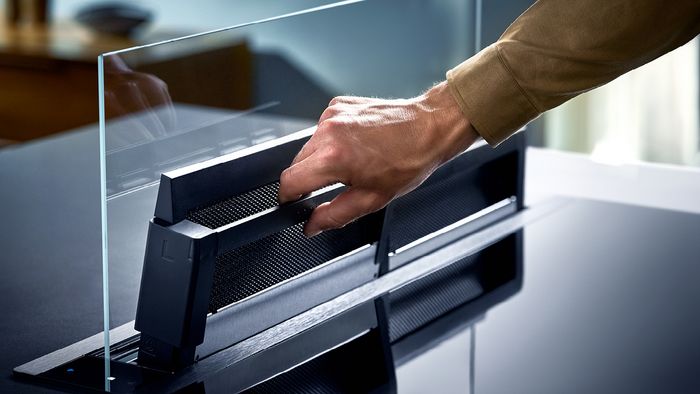
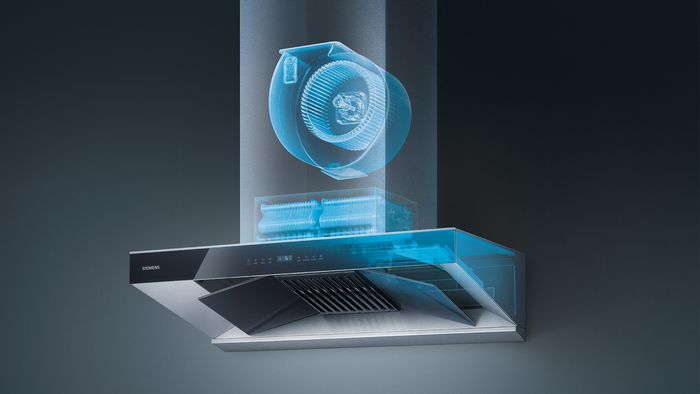
What is the ideal noise level for an extractor and why is this important?
Normal conversation generates around 60 decibels (dB) of sound so, to make sure your extractor does not drown out speech, look for models with a decibel level of 60dB or lower on a normal fan setting. Note that turning up the power should not increase the decibels. The iQdrive motor in Siemens extractors means they are efficient and quiet across all power levels.
Is there a recommended minimum distance between the extractor and the hob?
For wall and ceiling-mounted extractors, be aware that you will need a minimum clearance of 75cm between your cooker hood and a gas hob or 65cm between your hood and an electric hob.
How wide should my extractor hood be?
Cooking vapours spread differently depending on the type of hob you have. With induction hobs, they travel sideways as well as up, so you will need a hood that is wider than your hob. For example, if you have a 60cm induction hob, choose a 90cm extractor. With gas hobs, the steam has a candle effect that rises out then up. That means you can choose an extractor that is the same width as your hob.
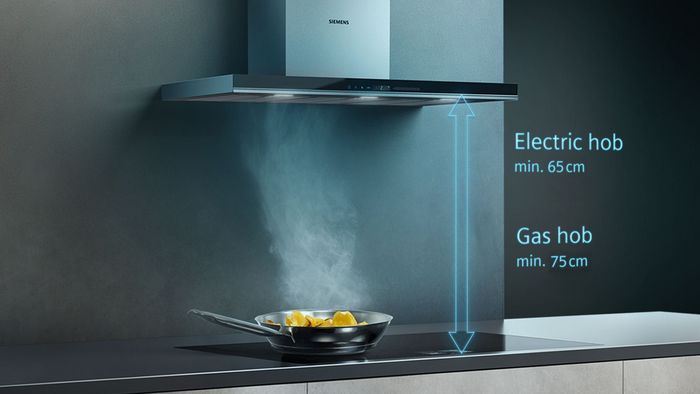
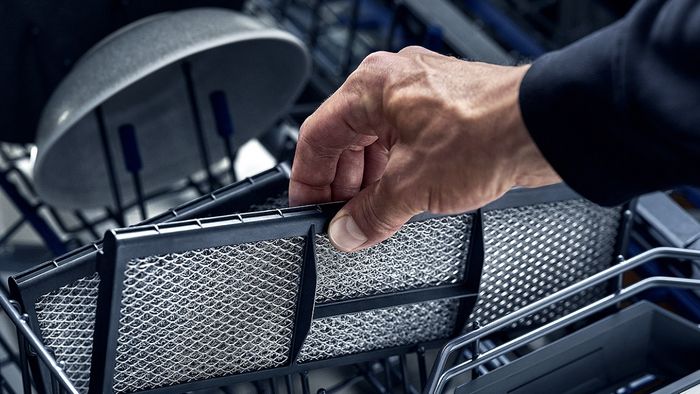
How do I look after my extractor hood?
Keeping filters clean and maintained will ensure your hood is performing at its best, so make sure you can easily access the hood to clean grease filters regularly (ideally every two months). Most filters can be cleaned in a dishwasher. If you are installing a recirculation mode, you will need to replace or regenerate the filter periodically. Selected Siemens hoods have grease and charcoal filter saturation indicators that tell you when your filters need cleaning or replacing. For WiFi-connected hoods, you can get a notification by the Home Connect app.
What are the latest trends in extraction?
Just because you are investing in an extractor does not mean you want it on display. If you prefer an unobtrusive look, one option is a venting hob – a real innovation in terms of ventilation. Instead of a separate hood, the extractor is integrated into the hob: perfect if you are planning to place it on a kitchen island as you can move it around freely.
Smart technology is also bringing extraction up to date. For example, hob-hood control allows you to connect a Wi-Fi-enabled hob directly to a Wi-Fi-enabled hood. You can then control both appliances via the Home Connect app, including setting the lighting. The app can also send you a notification when the filter needs changing.
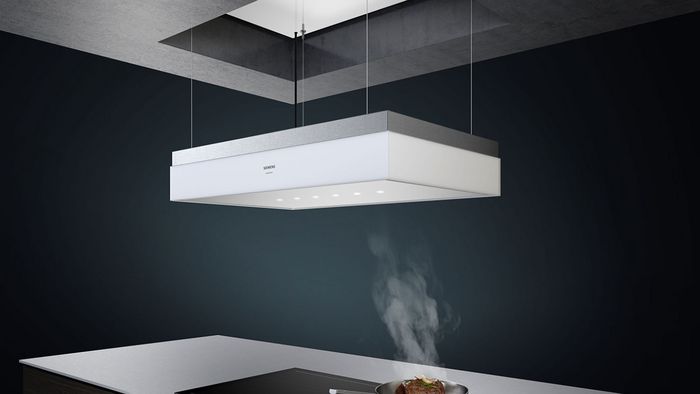

The next step on from this is voice control, now available on all new Siemens ceiling hoods from mid-level to premium models. Simply download the Alexa skill and connect it to your extractor hood via Home Connect. You can then ask Alexa to turn on your hood to a particular extraction rate, for example.
So whether you are looking at options for your new kitchen layout, or considering a replacement ventilation unit, find out more about the range of extraction solutions from Siemens here

